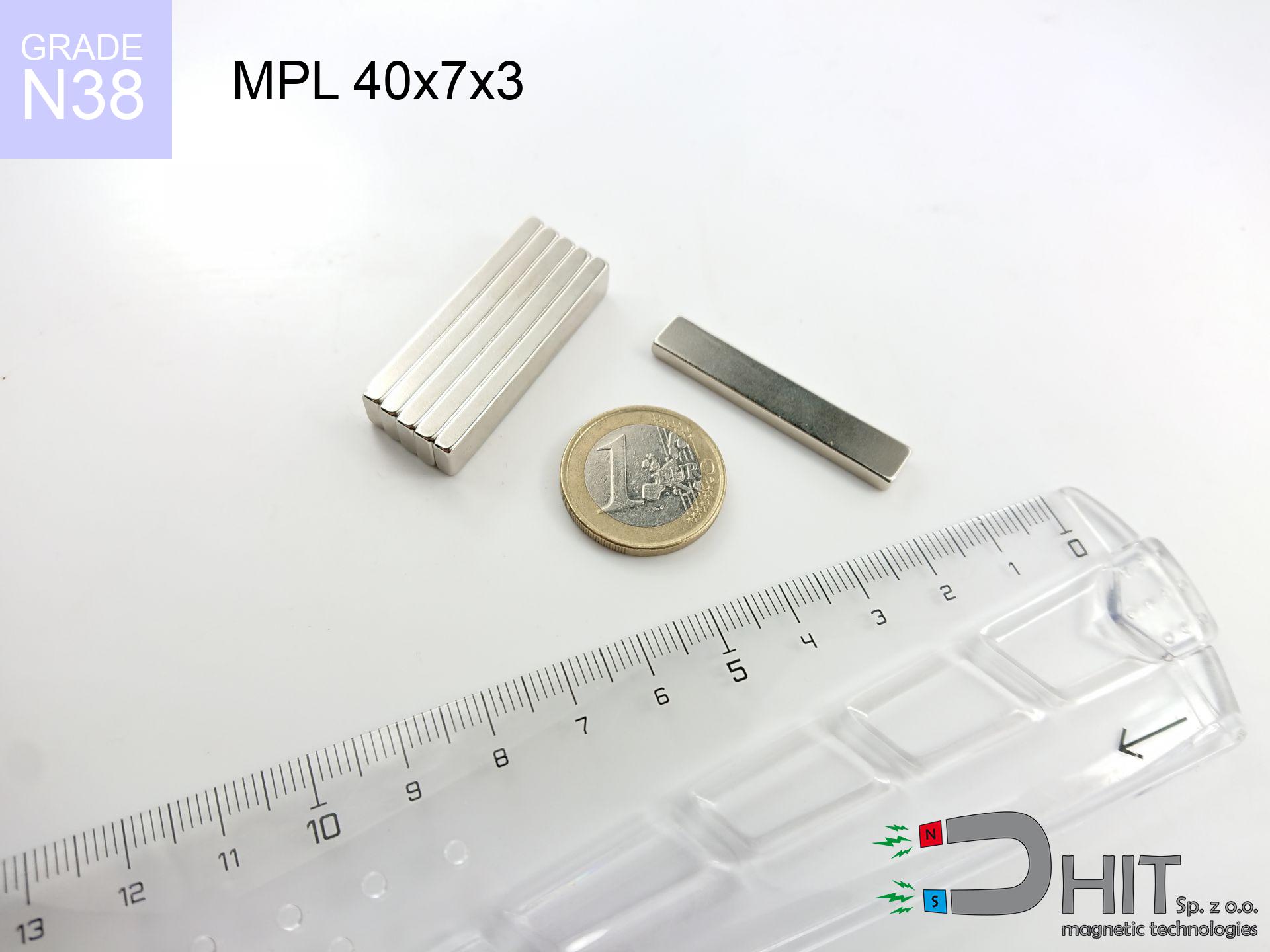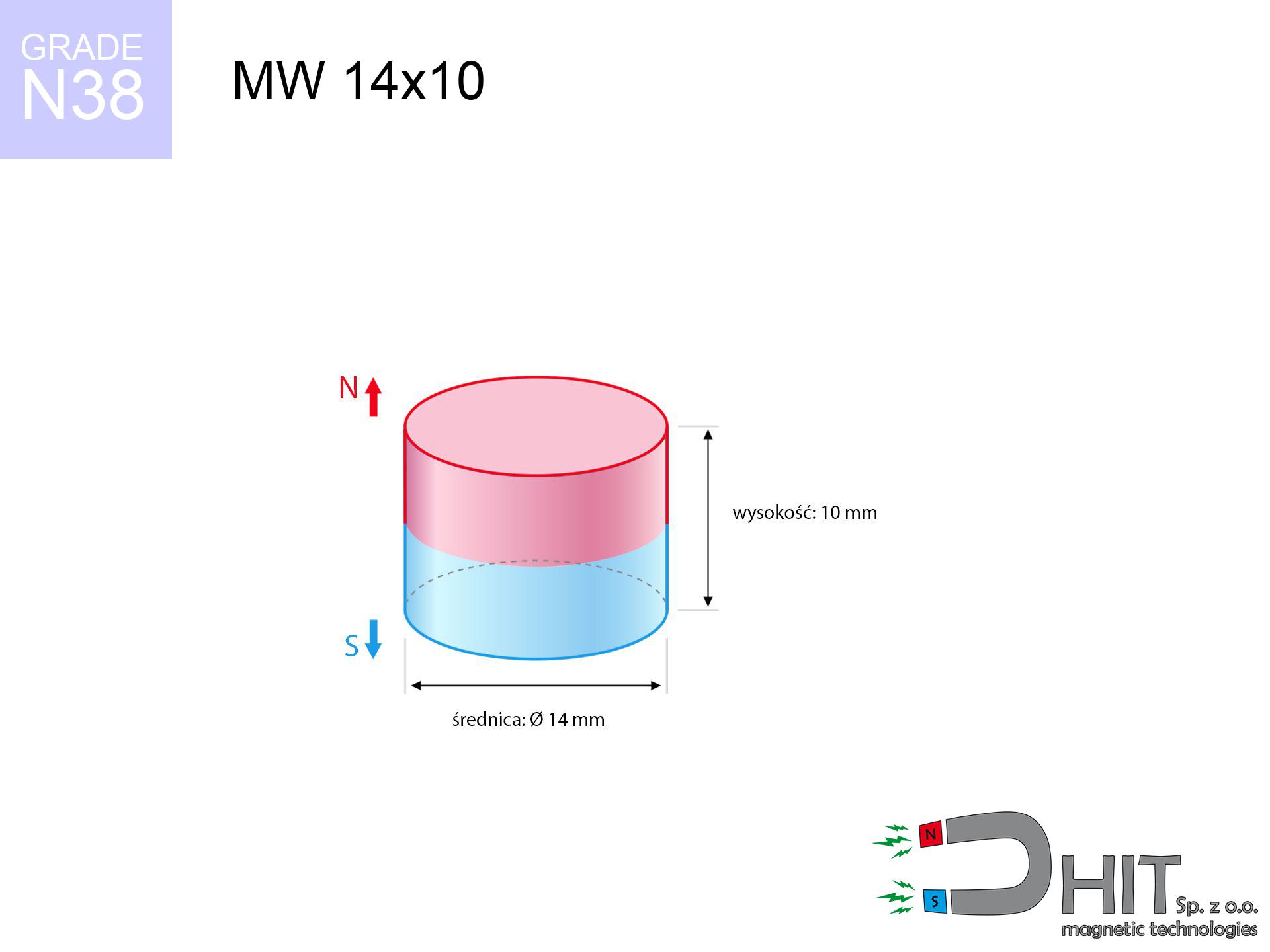UMGGW 22x6 [M4] GW / N38 - magnetic holder rubber internal thread
magnetic holder rubber internal thread
Catalog no 160304
GTIN/EAN: 5906301813620
Diameter Ø
22 mm [±1 mm]
Height
6 mm [±1 mm]
Weight
12 g
Load capacity
5.10 kg / 50.01 N
7.38 ZŁ with VAT / pcs + price for transport
6.00 ZŁ net + 23% VAT / pcs
bulk discounts:
Need more?
Call us
+48 22 499 98 98
or send us a note by means of
request form
our website.
Force and shape of neodymium magnets can be estimated with our
power calculator.
Order by 14:00 and we’ll ship today!
Technical of the product - UMGGW 22x6 [M4] GW / N38 - magnetic holder rubber internal thread
Specification / characteristics - UMGGW 22x6 [M4] GW / N38 - magnetic holder rubber internal thread
| properties | values |
|---|---|
| Cat. no. | 160304 |
| GTIN/EAN | 5906301813620 |
| Production/Distribution | Dhit sp. z o.o. |
| Country of origin | Poland / China / Germany |
| Customs code | 85059029 |
| Diameter Ø | 22 mm [±1 mm] |
| Height | 6 mm [±1 mm] |
| Weight | 12 g |
| Load capacity ~ ? | 5.10 kg / 50.01 N |
| Manufacturing Tolerance | ±1 mm |
Magnetic properties of material N38
| properties | values | units |
|---|---|---|
| remenance Br [min. - max.] ? | 12.2-12.6 | kGs |
| remenance Br [min. - max.] ? | 1220-1260 | mT |
| coercivity bHc ? | 10.8-11.5 | kOe |
| coercivity bHc ? | 860-915 | kA/m |
| actual internal force iHc | ≥ 12 | kOe |
| actual internal force iHc | ≥ 955 | kA/m |
| energy density [min. - max.] ? | 36-38 | BH max MGOe |
| energy density [min. - max.] ? | 287-303 | BH max KJ/m |
| max. temperature ? | ≤ 80 | °C |
Physical properties of sintered neodymium magnets Nd2Fe14B at 20°C
| properties | values | units |
|---|---|---|
| Vickers hardness | ≥550 | Hv |
| Density | ≥7.4 | g/cm3 |
| Curie Temperature TC | 312 - 380 | °C |
| Curie Temperature TF | 593 - 716 | °F |
| Specific resistance | 150 | μΩ⋅cm |
| Bending strength | 250 | MPa |
| Compressive strength | 1000~1100 | MPa |
| Thermal expansion parallel (∥) to orientation (M) | (3-4) x 10-6 | °C-1 |
| Thermal expansion perpendicular (⊥) to orientation (M) | -(1-3) x 10-6 | °C-1 |
| Young's modulus | 1.7 x 104 | kg/mm² |
Chemical composition
| iron (Fe) | 64% – 68% |
| neodymium (Nd) | 29% – 32% |
| boron (B) | 1.1% – 1.2% |
| dysprosium (Dy) | 0.5% – 2.0% |
| coating (Ni-Cu-Ni) | < 0.05% |
Environmental data
| recyclability (EoL) | 100% |
| recycled raw materials | ~10% (pre-cons) |
| carbon footprint | low / zredukowany |
| waste code (EWC) | 16 02 16 |
View more offers
Strengths and weaknesses of rare earth magnets.
Pros
- They have constant strength, and over nearly ten years their performance decreases symbolically – ~1% (according to theory),
- They are extremely resistant to demagnetization induced by presence of other magnetic fields,
- The use of an metallic coating of noble metals (nickel, gold, silver) causes the element to have aesthetics,
- They feature high magnetic induction at the operating surface, which improves attraction properties,
- Due to their durability and thermal resistance, neodymium magnets can operate (depending on the shape) even at high temperatures reaching 230°C or more...
- Considering the option of flexible shaping and adaptation to unique needs, neodymium magnets can be produced in a broad palette of forms and dimensions, which increases their versatility,
- Universal use in high-tech industry – they serve a role in magnetic memories, drive modules, diagnostic systems, also modern systems.
- Compactness – despite small sizes they offer powerful magnetic field, making them ideal for precision applications
Weaknesses
- To avoid cracks upon strong impacts, we suggest using special steel holders. Such a solution protects the magnet and simultaneously improves its durability.
- We warn that neodymium magnets can lose their strength at high temperatures. To prevent this, we suggest our specialized [AH] magnets, which work effectively even at 230°C.
- When exposed to humidity, magnets start to rust. For applications outside, it is recommended to use protective magnets, such as magnets in rubber or plastics, which secure oxidation as well as corrosion.
- Limited possibility of producing threads in the magnet and complicated shapes - preferred is casing - magnetic holder.
- Possible danger related to microscopic parts of magnets are risky, if swallowed, which gains importance in the context of child health protection. Additionally, small elements of these devices are able to disrupt the diagnostic process medical in case of swallowing.
- Due to neodymium price, their price is higher than average,
Lifting parameters
Maximum magnetic pulling force – what contributes to it?
- on a block made of mild steel, effectively closing the magnetic field
- whose thickness reaches at least 10 mm
- with an ideally smooth touching surface
- with total lack of distance (no paint)
- during pulling in a direction vertical to the plane
- at ambient temperature room level
Key elements affecting lifting force
- Distance – existence of any layer (paint, dirt, air) interrupts the magnetic circuit, which reduces power steeply (even by 50% at 0.5 mm).
- Load vector – maximum parameter is obtained only during pulling at a 90° angle. The resistance to sliding of the magnet along the plate is usually several times lower (approx. 1/5 of the lifting capacity).
- Base massiveness – insufficiently thick plate does not close the flux, causing part of the power to be lost into the air.
- Plate material – low-carbon steel attracts best. Alloy admixtures reduce magnetic properties and lifting capacity.
- Base smoothness – the smoother and more polished the surface, the larger the contact zone and higher the lifting capacity. Roughness creates an air distance.
- Thermal environment – heating the magnet causes a temporary drop of induction. Check the maximum operating temperature for a given model.
Lifting capacity testing was carried out on plates with a smooth surface of optimal thickness, under perpendicular forces, whereas under parallel forces the lifting capacity is smaller. In addition, even a small distance between the magnet’s surface and the plate reduces the load capacity.
Safety rules for work with NdFeB magnets
Data carriers
Do not bring magnets near a wallet, laptop, or TV. The magnetic field can permanently damage these devices and erase data from cards.
Keep away from children
Product intended for adults. Small elements pose a choking risk, leading to serious injuries. Store out of reach of children and animals.
Danger to pacemakers
Individuals with a pacemaker should keep an large gap from magnets. The magnetism can stop the operation of the life-saving device.
Demagnetization risk
Watch the temperature. Exposing the magnet to high heat will ruin its properties and pulling force.
GPS Danger
Navigation devices and mobile phones are extremely susceptible to magnetism. Close proximity with a powerful NdFeB magnet can decalibrate the internal compass in your phone.
Do not underestimate power
Use magnets consciously. Their huge power can shock even professionals. Be vigilant and respect their power.
Protective goggles
NdFeB magnets are sintered ceramics, which means they are fragile like glass. Collision of two magnets leads to them cracking into small pieces.
Mechanical processing
Fire hazard: Rare earth powder is highly flammable. Avoid machining magnets without safety gear as this risks ignition.
Bone fractures
Mind your fingers. Two powerful magnets will join instantly with a force of several hundred kilograms, destroying anything in their path. Be careful!
Allergic reactions
Studies show that the nickel plating (standard magnet coating) is a strong allergen. If your skin reacts to metals, avoid direct skin contact and choose encased magnets.

![Rubber coated magnetic holder UMGGW 22x6 [M4] GW / N38 Rubber coated magnetic holder UMGGW 22x6 [M4] GW / N38](https://cdn3.dhit.pl/graphics/banners/magnet.webp)
![UMGGW 22x6 [M4] GW / N38 - magnetic holder rubber internal thread](https://cdn3.dhit.pl/graphics/products/umg-22x6-m4-gw-jek.jpg)





